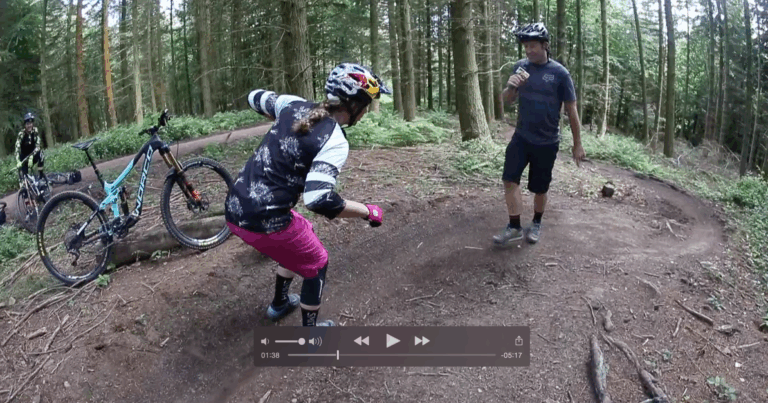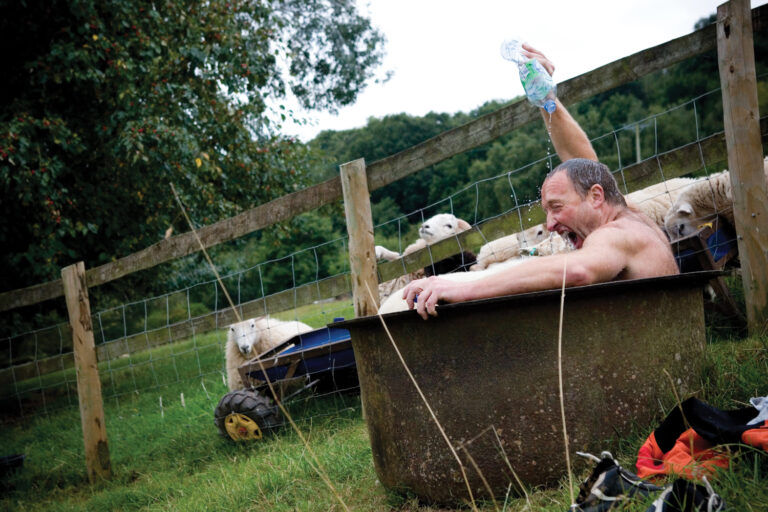
With the race season almost upon us it’s time for everyone to start benefiting from all those detailed goal driven performance plans they implemented over the winter…
From Dirt Issue 134 – April 2013
Words by Darren ‘Conehead’ Roberts. Photo by Sven Martin.
As I’ve discussed before, the needs of the elite and the weekend rider differ by degree not kind. The processes and planning are all applicable across the whole spectrum of rider, not just World Cup racers.
We’re happy to strive for and buy the best equipment, we look to the elite’s for what they’re using in an effort to make ourselves faster on the hills. However the most important piece of kit is your own body, and its ability to tolerate what you’re asking it to do. I touched on it during in the piece on ‘injuries’ about having a basic movement screen to make sure everything is moving in the direction it’s supposed to. Just as with your bike, the time and attention to detail which you apply to your steed before riding it also applies to you. Just as there are rudimentary checks you can carry out on your bike before you head out for a weekend of shredding or racing, you can give yourself a once over to ensure you’re in good working order. It’s money well spent to have a professional look over how you’re moving, just as it’s a good idea to get a technical coach to look at your riding. The bike doesn’t ride itself, and ensuring the ‘engine’, i.e. you, is in good working order seems like a wise move.
The hips and how they work are key to riding a bike, they join your legs to your body after all! A key muscle in how your hips work are your glutes, which is the largest muscle in your body for the anatomy geeks. Riding bikes it’s easy to only think of the thigh muscles, and after a particular hard ride having sore ‘thighs’ is a tactile reminder that you’ve been using them. However, if your ass muscles are not working properly you’re missing out on a ton of muscle power as well as causing your hamstrings (back of thighs) to work overtime. If I want to check what an athletes glutes and general leg strength and control is like I get them to do a single leg squat. All we need is a chair to sit on.
- Athlete stands in front of a chair
- Standing on one leg only, they lower themselves down until they touch the chair trying to keep their torso as upright as possible
- When their ass touches the chair, they drive themselves back up to the standing position
- Swap legs
Things I’m watching for:
- Make sure the chair isn’t too low or can move when they touch it
- Don’t bend over with their arms out in front of them like superman as they lower down, try and keep their torso as upright as possible
- If the knee on the leg they’re doing a single leg squat with shoots towards the other leg, their glutes might not be as strong as they should be
- If the leg they’re doing a single leg squat generally waves about all over the place and they ‘collapse’ onto the chair, then their general leg strength needs work as well as glutes
You may find that one leg is stronger than the other, or looks more controlled – this means they’ll be favouring one leg when pedalling, the most obvious issue with that is they’re losing out on power by not using both legs. Less obvious is they will develop back problems over time from having a pelvis being pulled in different directions from legs with differing strength. The way to fix this is simply do single leg squats onto a chair, the more they do them the better they’ll get at them – all in the comfort of their own home. Sets and reps are of course subjective, however we tend to go with four sets of however many ‘quality’ reps they can do. We view it as education training for their legs ‘individually’ to try and get the right muscles switched on. We can also work on this using single leg drills on a turbo, something which few people do because it clearly highlights the differences between legs, and no one likes bad news.
Another issue if their glutes are not working properly is the hamstrings being ‘over–engaged’, which is often simply felt as ‘tight hamstrings’. This then leads to lots of hamstring stretches to ‘loosen’ them, which in fact makes them even more engaged! This in turn means that their hamstrings are pulling down on the pelvis which can then lead to lower back pain, and so the merry–go–round carries on as more and more dysfunctions lead to more and more compensations. Having over–engaged hamstrings also makes them more prone to being injured. They’re already ‘switched on’, so an aggressive pedal push simply asks an already switched on muscles to do even more work.
Being able to touch your toes is an extremely ‘unfashionable’ way to test your hamstring flexibility, but that doesn’t mean it can’t help athletes and weekend warriors to quickly assess what’s happening.
- Simply stand with their feet together and ask them to try and touch their toes without bending knees
- Can they do this, yes or no?
- If not and their finger tips are somewhere around their knees then they need to try and get their hamstrings to ‘switch off’
- Do this by asking them to squeeze a cushion between their legs while standing with their toes on a 6 inch step, then slowly try touch toes while trying to squeeze the life out of the cushion for the entire time
- Return to standing position and repeat this slowly for around 10 reps – keeping the squeeze on!
- Remove the cushion and ask them touch toes again and see if they can go further.
Unlike the single leg squats, I’d limit this to two sets of ten reps each leg, maybe three times per week – and be prepared for their hamstrings to feel like they’ve been trained the next day!
Another key link in the physical chain is the trunk, as everything is attached to it. Trunk strength is what stops you from flopping all over the bike when you’re going downhill as well as maintain whatever posture you want on the bike. So if your trunk strength isn’t up to the job you’re going to be flopping about like a rag doll. A simple way to check this with the athletes is through the ‘plank’. As usual there is no need for any fancy equipment, just a flat surface.
- Get them into a press–up position or ‘front plank’ position
- Drop onto elbows maintaining straight back and hips level
- See how long they can hold that position for
- As soon as hips drop or position is lost, stop clock
- Repeat for ‘side plank’ position on right side and left side
The time should be the same for all three positions. What tends to happen is that the front plank gets a good time but the sides last a lot less, and often the sides differ from left to right. The trunk muscles need to be strong in all directions, so if the trunk muscles like the obliques are not as strong as the abs and erectors – they’ve not got the control they want in the trunk. They also have muscles of different strengths pulling on the spine in different directions, like a tent pole with some ropes too tight and others not tight enough – it won’t hold it straight. Two minutes is the standard we look to in front and side planks – as usual the best way to work on it is to simply do it!
They are three simple areas to look at, but each of them has a clear impact on physical performance. If any or all three are not working as they should it can send anyone into a steady downward spiral of physical compensations which over time will lead to over–use injuries. It’s then difficult to diagnose what the issues really are amongst the ‘white noise’ of compensations. This is one of the reasons you see or hear of athletes having trouble getting a niggling injury resolved. The key message is everyone needs to take some time to ask if the body is up to what you’re about to ask it to do. Just like you make sure that everything is oiled and running smooth on the bike, if anything is out of line or not running well it will cause a breakdown or part failure. The body is no different, it seems a shame to have a fully prepped bike, with trails and runs crying out to be ridden whilst you’re laid up with a pulled hamstring or bad back. Just spend some time to make sure you’re oiled up and running smooth!
Darren Roberts is Head of High Performance at Red Bull UK working with the likes of the Atherton family, Danny MacAskill, MX enduro star David Knight and many, many others.This article is part of the Work Out series. You can find the rest of Darren Roberts’ training tips through the links below:
[series]





